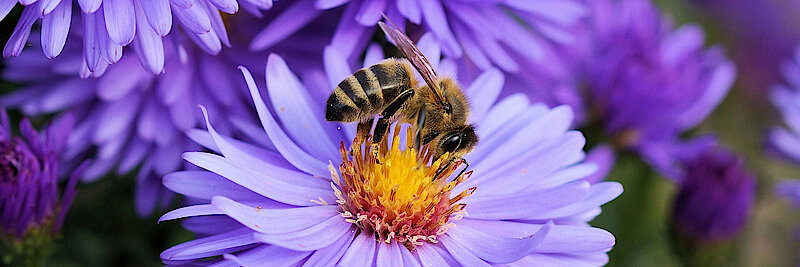Germany
Blooming meadows in Hessen

Protected land
53,088 m²
Climate protection factor
(in kg CO2 / m² / 50 years)
27
Status
saved
Ziel
2025
Blooming meadows in Hessen

Blooming meadows in Hessen
It will hum again in Wiesbaden, Naurod and Rambach due to the come back of butterflies, bumblebees, beetles and bees. Thanks to over 300 international and national donators, had Naturefund the opportunity to buy more than 17.000 m² fields, orchards and parcels of land and transformed them into blooming meadows. Our thanks goes also to our climatepartners who contribute with their continuous support to the protection of these ecosystems. The climatepartner Syracom has completed the project with a contribution for 870 trees. Fruit trees, pastures and native plant species increased Wiesbaden's biodiversity again. Many thanks to all of you!
Insects can find food again
The foothills of the Taunus, which is in the north of Wiesbaden, are surrounded by forest, a lot of field which are monocultures of grain, rape or corn and just a few flowers. This region only blooms a few weeks a year. The remaining year wild bees, butterflies and many other insects are not able to find food. In the last few years the flowers disappeared and with them the insects and birds. As a consequence there were less and less species in the landscape.
Fields and meadows for nature
Naturefund bought a land parcel in Wiesbaden Naurod and four others in Wiesbaden Rambach. The land parcels are arable land, meadows, orchards and one stream meadow. By enriching the areas with native wildflowers, Naturefund offers numerous endangered insects food, shelter and breeding grounds throughout the year. Willows (Salix caprea) were planted on a plot of land and therefore were old almost decaying fruit trees saved. The tree species provide many blossoms which are an ideal and valuable habitat for rare butterflies and other insects.
Grasslands bind a lot of CO2
The earth's ecosystems store a lot of CO2. However, most people think that our trees and forests absorb most of the greenhouse gases. The Bodenatlas 2015 has therefore drawn up a precise list showing how much CO2 an ecosystem is able to absorb. Grasslands generally absorb more CO2 than Forests. The carbon sequestration in grasslands refers to above ground and underground biomass, but mainly to the sequestration in the soil. Because of their diverse and numerous roots, these ecosystems can absorb 15.8 kg CO2 per m². Only peatlands exceed this capacity.
Alle Projekte

Protected land
53,088 m²
Climate protection factor
(in kg CO2 / m² / 50 years)
27
Status
saved